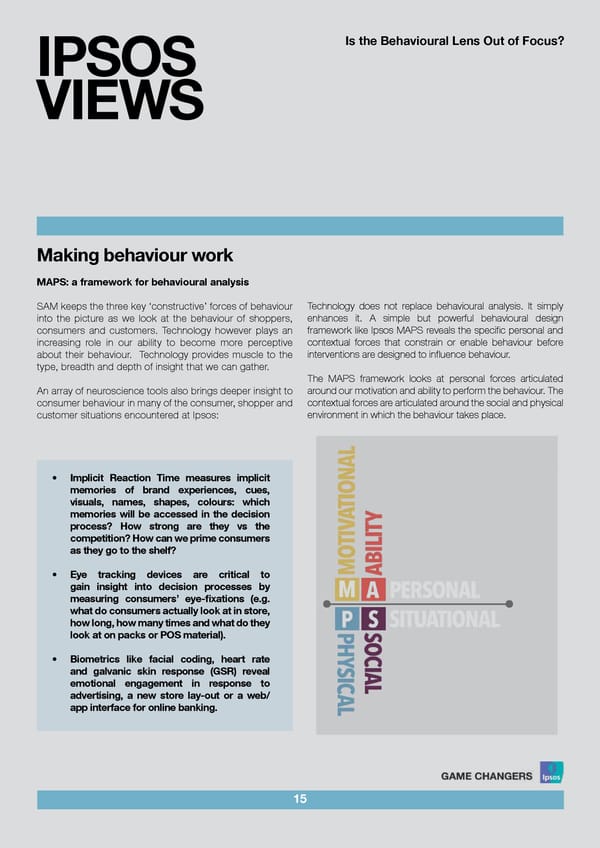IPSOS Is the Behavioural Lens Out of Focus? VIEWS Making behaviour work MAPS: a framework for behavioural analysis SAM keeps the three key ‘constructive’ forces of behaviour Technology does not replace behavioural analysis. It simply into the picture as we look at the behaviour of shoppers, enhances it. A simple but powerful behavioural design consumers and customers. Technology however plays an framework like Ipsos MAPS reveals the specific personal and increasing role in our ability to become more perceptive contextual forces that constrain or enable behaviour before about their behaviour. Technology provides muscle to the interventions are designed to influence behaviour. type, breadth and depth of insight that we can gather. The MAPS framework looks at personal forces articulated An array of neuroscience tools also brings deeper insight to around our motivation and ability to perform the behaviour. The consumer behaviour in many of the consumer, shopper and contextual forces are articulated around the social and physical customer situations encountered at Ipsos: environment in which the behaviour takes place. • Implicit Reaction Time measures implicit memories of brand experiences, cues, visuals, names, shapes, colours: which memories will be accessed in the decision process? How strong are they vs the competition? How can we prime consumers as they go to the shelf? • Eye tracking devices are critical to gain insight into decision processes by measuring consumers’ eye-fixations (e.g. what do consumers actually look at in store, how long, how many times and what do they look at on packs or POS material). • Biometrics like facial coding, heart rate and galvanic skin response (GSR) reveal emotional engagement in response to advertising, a new store lay-out or a web/ app interface for online banking. 15
 Is the Behavioural Lens Out of Focus? Page 16 Page 18
Is the Behavioural Lens Out of Focus? Page 16 Page 18